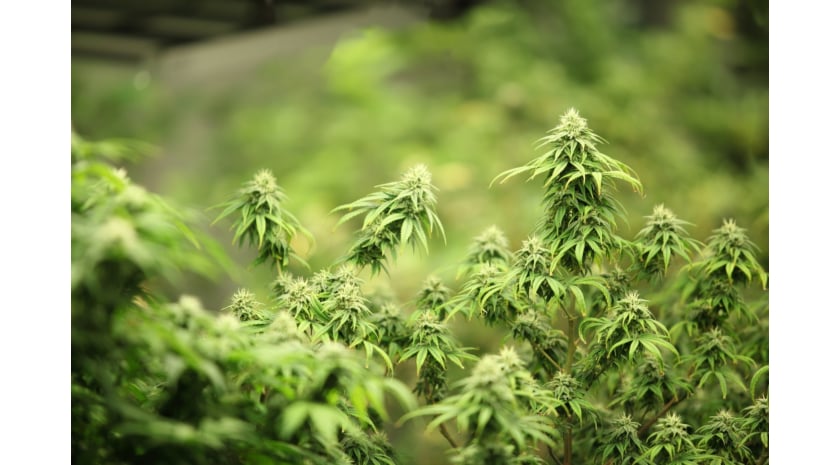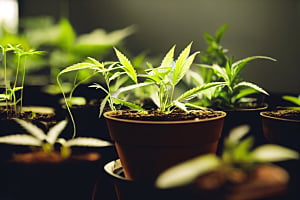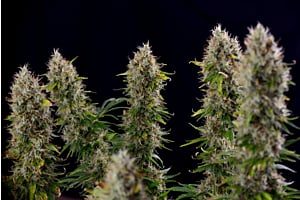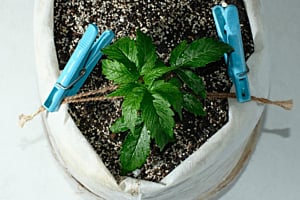Contents
What is the flowering stage of cannabis?
Week-by-week flowering stage timeline
Grow your cannabis buds like a pro
Did you know that the cannabis flowering stage is when plants produce resinous buds? They undergo hormonal changes that trigger the development of wispy pistils (white hairs) and bud sites in this phase.
Weed breeders with knowledge of the growth stages and weekly timelines can produce potent, trichome-covered nugs.
Are you new to marijuana growing and seeking in-depth knowledge about bud production? Keep reading to discover more about the cannabis blooming phase and explore weekly timelines from stage one to harvest.
Let’s dive in.
What is the flowering stage of cannabis?
The flowering stage is the last growth period of a marijuana crop’s life cycle. It’s also known as the fruiting or blooming phase, during which cannabis plants develop dense flowers.
Although the flowering stages of weed strains vary, most have early, mid, and late sub-phases. They grow white hairs or pistils during the earlier periods. At mid-stage, the flowers stop developing, and crops focus more energy on fattening their buds.
The nugs become heavy as the trichome density increases into the final stage, after which they’re ready to harvest.
The milky trichomes turn amber when your premium or beginner weed seeds are fully ripened. Another notable indication of their maturity is the white pistils, which change to reddish-orange.
Cannabis flowering stages
The weed flowering phases progress through categories, from transition and stretch to buds forming and ripening. Let’s dig into the details of their maturity stages for easy understanding.
Weeks 1–3: Transition and stretch
This phase begins immediately after the vegetative period. Outdoors, the days get shorter as summer turns to fall, activating the pot plants’ transition to flowering.
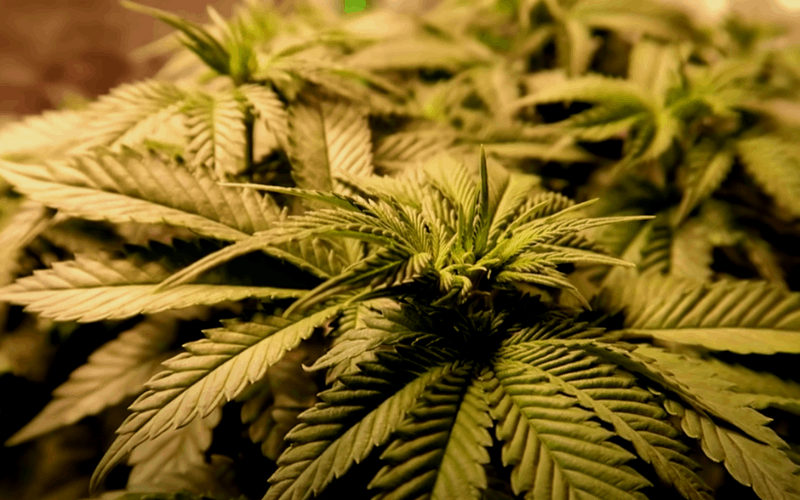
These stages of cannabis flowering begin indoors when you adopt a daily grow light cycle. Unlike the 18+ hours of light in vegging, crops get 12 hours of darkness and 12 hours of light daily during the first three weeks.
The reduced time spent under the light signals rapid cannabis stretching as the crops think the days are getting shorter. The plants rapidly produce new leaves, stems, and bud sites in this transitional period. Many crops double or even triple in height during this time.
When your flowers grow taller, you can adopt a high-stress training (HST) method for bending stems called super cropping. This technique allows you to curve plant stems at a 90-degree angle.
Consider spreading the plants out to maximize yields and bend stretching stems away from the center when they’re tall. You can also manage the stretch by using trellis netting to capture the branches for better organization.
You may notice loads of single leaves forming and white pistils appearing during these stages of weed flowering.
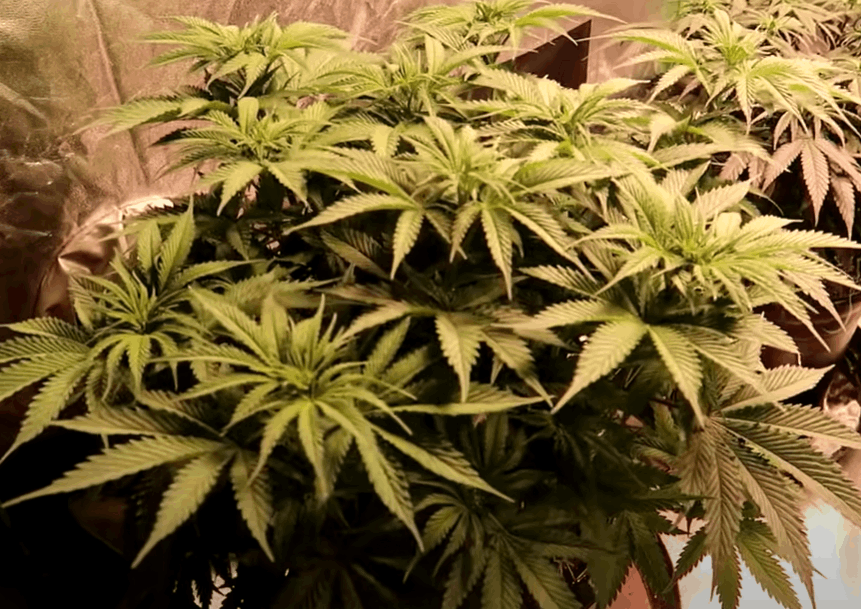
If you spot pollen sacs and not pistils, immediately remove them from your greenhouse. They’re male and can’t develop buds. They may also pollinate your females, causing them to produce seeds.
It’s best to avoid giving feminized crops any light during the dark phases, as it may affect their development. They may not produce nugs if any light appears during their dark period.
Although they’re resilient and can recover if something goes wrong, stunting growth could cause fewer and smaller bud sites.
Weeks 3–4: Buds form
The rapid stretch in the previous stages of flowering weed slows down during weeks three and four. This period is when the crops start forming tiny buds. Instead of just hairs, you see real nugs with white pistils sticking almost straight out.
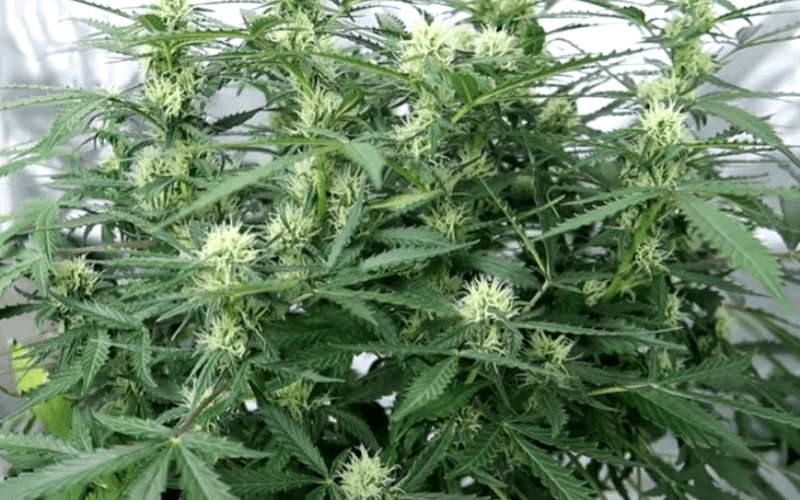
Whether growing THC-dominant or high CBD cannabis seeds, your flowers should remain lush and green but picky with nutrients and the environment.
Ensure they have no major health concerns hindering development, and keep an eye out for red flags. Nutrient deficiency symptoms are common indicators that appear on the flowers.
You may notice the plant’s bottom leaves turning yellow; don’t fret if the impact is minimal. It’s normal and often occurs due to a lack of light or sunshine for flowers in the lower parts. The green crops extract nutrients from the bottom leaves for proper bud development.
Avoid overfeeding the crop with high levels of supplements at these stages of marijuana flowering as it may cause nute burn. As a result, your leaves could develop brown and yellow on the tips or appear burned.
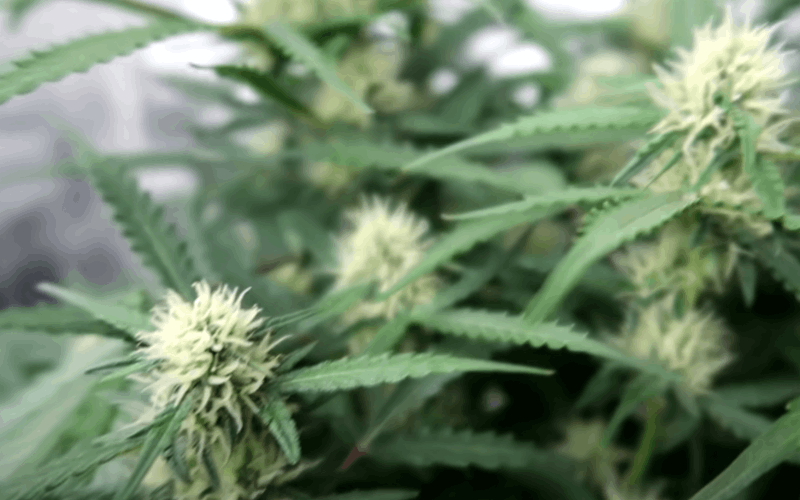
Solve this problem by using pH-balanced water to rinse out the excess vitamins. Read fertilizer labels carefully to track what you feed the crops and make necessary corrections when you notice a problem.
If left untreated, the burn spreads to other parts of your leaves, affecting their ability to produce nutrients. You can also introduce magnesium and phosphorus to the crops’ feeding at this stage. These supplements maximize the yield potential and enhance bud development.
Weeks 4–6: Buds get bigger
After the buds form, the fattening phase is next. During these weeks, the production of new leaves and budding sites slows, with a renewed focus on increasing nug sizes.
Although cannabis matures slowly, the tiny nugs grow bigger daily. They still retain the white pistils sticking out of them in all directions.
Instead of focusing on the flowering site during the fourth to sixth stages of flowering, keep the heavy buds in check and upright. If they’re too close to the lights due to training, reposition their placement to prevent bleaching.
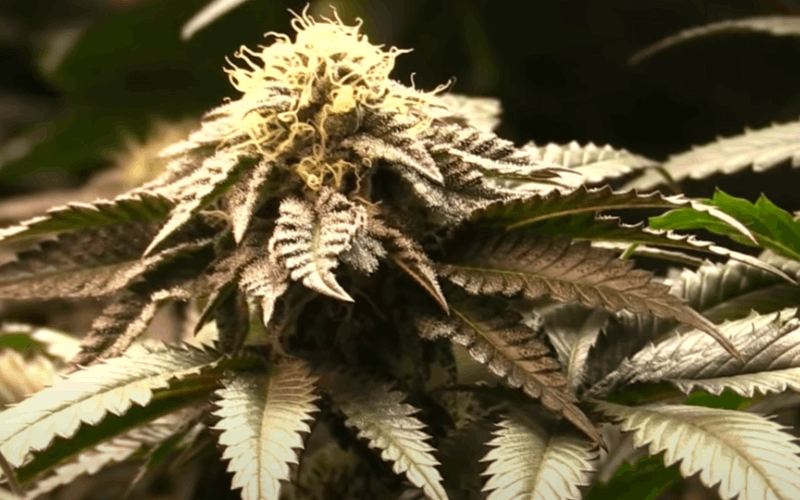
Strategic defoliation is another excellent option. Remove unnecessary foliage, which improves visibility and exposes additional bud sites to light.
Leaving as many leaves as possible is incredibly important because they serve as insurance or armor against nutrient problems.
Since the reproduction of stems and leaves has stopped, preserve the existing flowers to power the growth of more potent nugs.
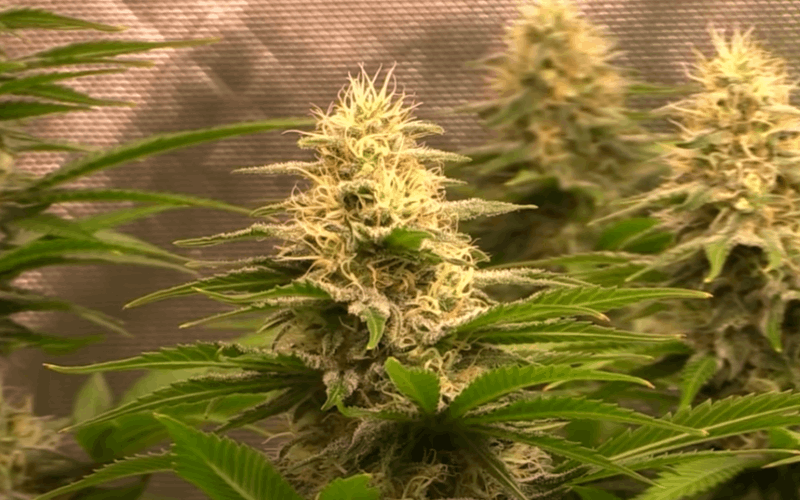
These phases require balanced nutrients to prevent deficiencies causing yellow leaves. The crops need adequate water for proper bud development as transpiration occurs at a high rate.
Weeks 6–8: Buds ripen
These stages of flowering cannabis are where the white pistils turn dark and the buds start to ripen. All traits of the vegetative period are gone in these periods, as plants don’t produce new branches and flowers.
The mature crops focus on growing potent nugs until the final stages. It’s the phase where they grow the largest. At this point, they become sensitive to nutrient problems.
For example, adding supplements that promote vegetative growth can be counterproductive. It causes leaf accumulation that negatively affects bud quality.
Excess nitrogen can also stress your plants and cause self-pollination, adversely affecting the taste and quantity of the harvest.
Another common mistake to avoid during these stages of flowering weed plants is foxtailing, often caused by high temperatures or light damage. It’s a sign of environmental stress and often leads to new buds emerging from the side of an existing one.
Prevent further damage by controlling the light levels and growing space temperature. Marijuana plants thrive at 65–85°F indoors and 60–75°F outdoors. They also flourish when the level drops at night.
Avoid high heat levels as they may bleach or discolor your nugs and affect their potency. They should increase significantly in size if there are no problems with the plant.
Over 8 weeks: Buds ready to harvest
Your buds are harvest-ready after eight weeks, so sift through the plants to find additional hidden issues and cater to their needs. The genetics of the cultivar you grow will determine when it’s ripe for collection. Most strains usually have a typical window of another week.
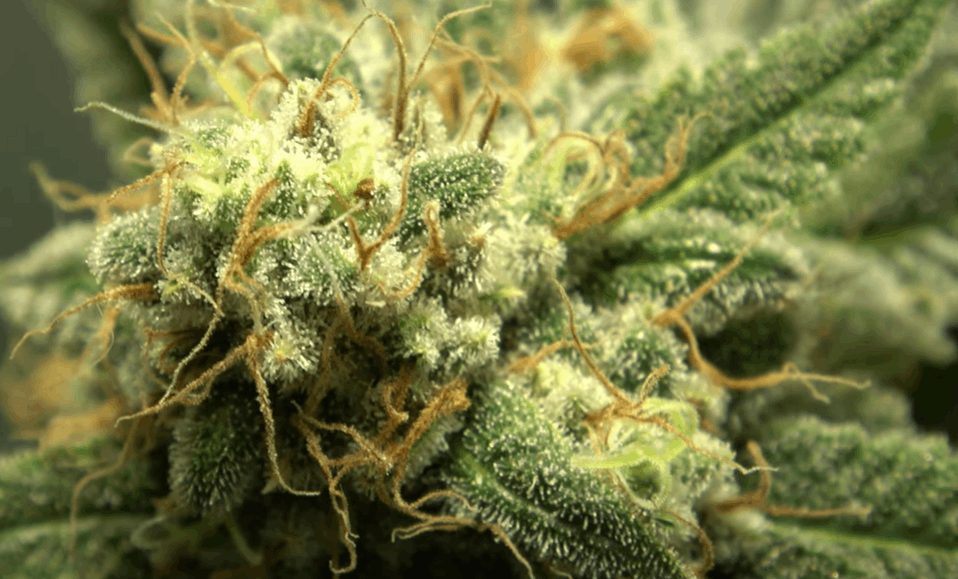
During these stages of flowering pot plants, the nugs fatten, trichomes turn amber, and the pistils mature. Expect a refreshing and aromatic smell around 8–10 weeks.
The trichomes turn orange from white during these weeks, which signals that harvest time is close. Your leaves may also start yellowing, but there’s no cause for alarm if it isn’t affecting the nugs.
Some may become heavier than their branches can carry and require support to stay upright. Solve the problem by propping your crops using mesh with a wide lattice or pieces of string and bamboo canes.
Crops can quickly become sensitive to environmental conditions when close to harvest. For example, inadequate airflow during these flowering stages of cannabis may affect plant transpiration, leading to trapped excess moisture in the buds.
It often causes ailments that can derail your plants if left unchecked. You may want to collect your weed nugs early and improve unwanted defects by curing them if the symptoms worsen.
Week-by-week flowering stage timeline
From developing pistils to sugar leaves and trichomes, your precious pot plant’s flowering stage is where bud production happens. Mistakes during these weeks are costly and can adversely affect the quality and size.
It’s best to learn what happens during each stage for a great cannabis harvesting experience. Let’s break it down week by week from transition to harvest:
Week 1 flowering
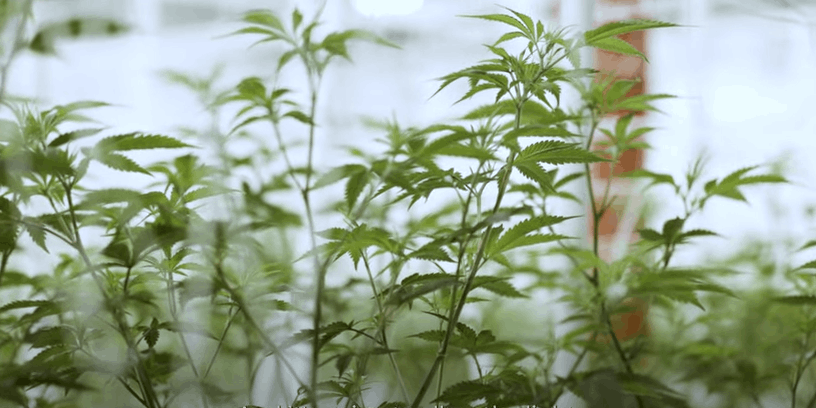
The first flowering period is also known as the transition phase. Changes are hardly visible during this week, with crops starting to transition from vegging plants to producing ripe buds.
Your plants burst rapidly during this cannabis stage of flowering. They also stretch, so you may want to bend the stems with a low-stress training (LST) technique.
It lets you make the most of the lights and available space to create a thriving environment while tweaking the positioning without significant damage.
Your crops are now flowering, so don’t change the feeding schedule abruptly. Instead, continue giving them growing supplements throughout the week one flowering stage.
Week 2 flowering
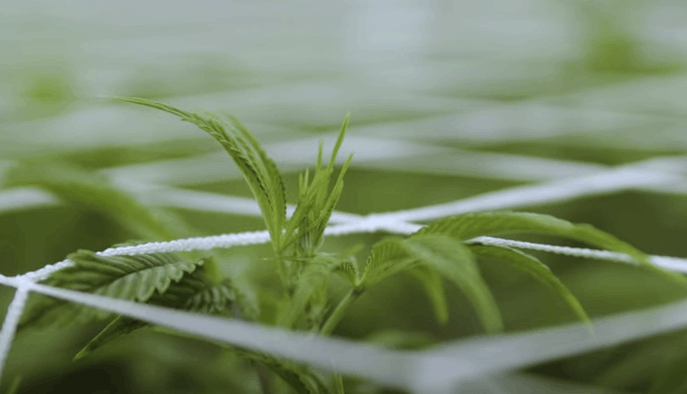
The plant redirects its energy to bud development in week two of flowering. As a result, you may spot pre-flowers (white pistils) starting to manifest their new life cycle physically.
They’re the buds’ foundation, also known as colas. They emerge from the spot where the fan leaves stick out through the main stem. To maximize nug production, expose the pistil’s sites to adequate light.
When feeding your crops in this phase or at different stages of marijuana plant flowering, check the recommended dosage on the label before adding nutrients.
Week 3 flowering
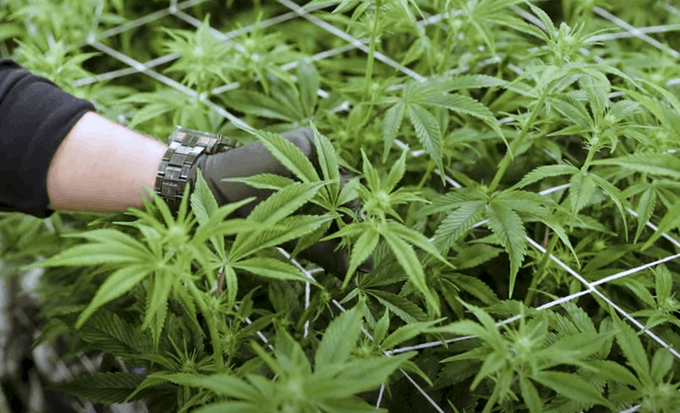
More pistils emerge from the leaf bunches on the colas with visible signs of bud development. It’s best to reduce feeding at this stage if you spot discoloration on the leaves’ tips.
As a golden rule of thumb, don’t overfeed them, as it often leads to nutrient burn that causes yellowing. Spotting and solving problems early makes recovery easier for your plants.
Your nugs continue to grow into the third week and could be about 50% bigger than in the beginning. You can improve their quality and yield with low-stress training as they’re still flexible and stretching.
Week 4 flowering
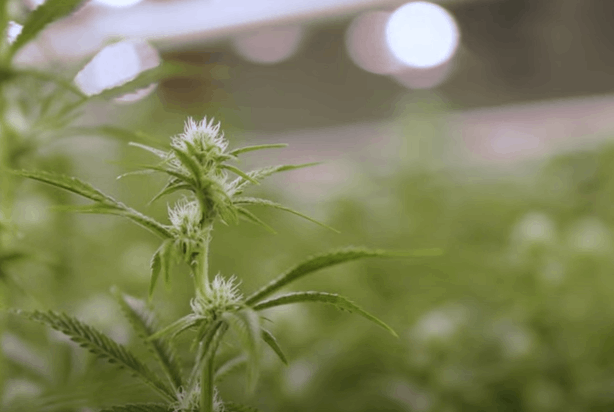
The requirements for different stages of marijuana flowering differ, but your plant focuses on maximizing bud yields in the fourth week. Since the leaves and stems have stopped growing, training or bending the branches becomes unnecessary.
You’ll notice sparkly little trichomes developing on the pistils, after which the mini buds will become fatter and bigger by the day.
They produce more trichomes as they develop, which creates a noticeable smell. You may require a contingency plan in privacy areas for the odor and should provide structural support for bent branches. Using duct tape or bamboo canes is ideal.
Week 5 flowering
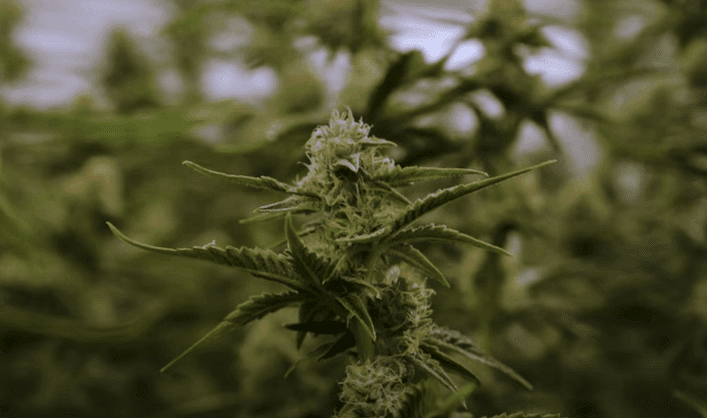
During the week five cannabis plant stages of flowering, the nugs become thicker and more recognizable. They start forming along the main cola, covered with a good number of white pistils turning into brownish orange.
The bud sites filling out is a sign that the plants are in full flowering mode and not far from harvest. It’s best to refrain from training your crops at this level and keep an eye on their health.
The trichomes become milky or cloudy, which signifies terpene production. As a result, your crop may produce an intense odor, making a proper ventilation system necessary for indoor growers.
Week 6 flowering
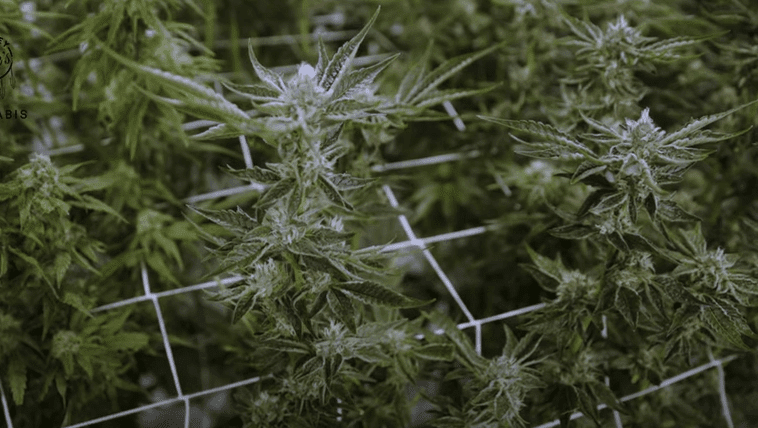
Bud development continues into the sixth week of the flowering stage of marijuana, and they ripen slowly. Most fan leaves begin to yellow and naturally defoliate, while the pistils start to darken.
It’s the phase where weed growers remove large older leaves towards the plant’s base when they spot discoloration.
Improve air circulation by removing leaves receiving inadequate lighting. It also refocuses energy toward full-scale bud production.
Although the growth rate for cannabis varieties differs in week six, most strains display thick, dense buds with sticky trichomes.
Week 7 flowering
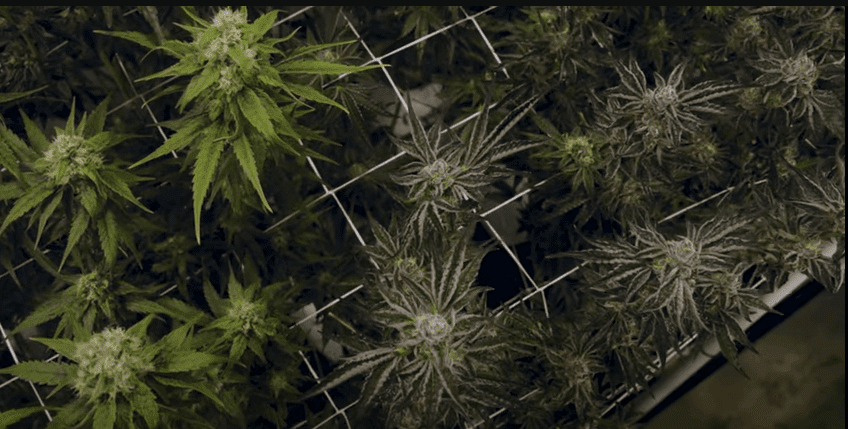
Growers look forward to bud appearance at different stages of flowering, but checking the pistils is necessary at this phase. They should be orange-brownish and have thick nugs.
You’ll notice mature amber trichomes, with some displaying a milky or cloudy color. When your crop reaches this maturity level, you can start counting down the days to harvest.
Based on your strain’s flowering time, two weeks before harvest is usually the best time to flush marijuana plants. Flushing refers to feeding cultivars plain, pH-balanced water without administering nutrients in the final weeks.
Experienced growers flush the crops by replacing nutrients with water two weeks before collecting the buds to enhance their quality.
This process removes the soil’s minerals and salts, ensuring your buds’ pure taste. Failure to flush your crops may influence the nugs’ flavor. Smoking them may exude a chemical and unpleasant taste.
Week 8 flowering
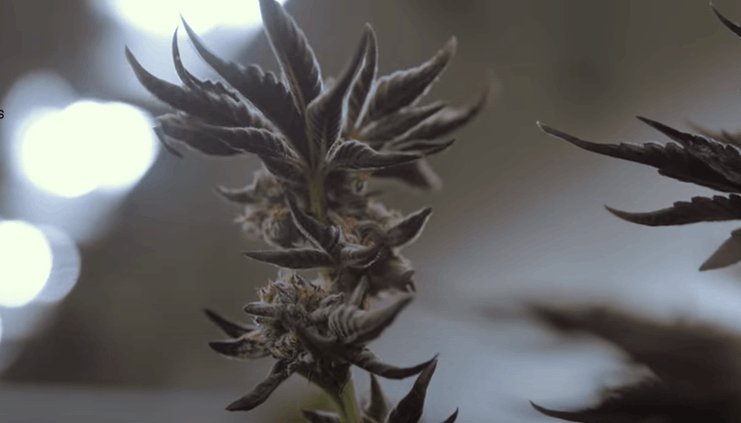
The buds reach their peak ripeness towards the end of week eight after counting from the beginning stages of flowering weed. By now, your leaves should be yellow or red, as the plants are usually colorful around this time.
Their THC levels are highest in this phase, so you want to collect them early. Generally, most weed varieties stop growing and start deteriorating if not harvested after approximately eight weeks.
It's best to check the crops’ trichomes regularly with a microscope to find out when they’re ripe. You can also observe their color as they change through maturity.
You’re in the early stages of marijuana flowering when they remain transparent and clear. Whether autoflower, regular, or feminized seeds, the nugs are ready for collection when the trichomes display an amber color.
Grow your cannabis buds like a pro
Watching flowers develop in real-time and growing resinous buds is exciting and rewarding for cultivators. After learning the weekly breakdown during these phases with mistakes to avoid, it’s time for a great harvest.
You can manage weed plants through every cannabis flowering stage with time and practice. Are you new to cultivating marijuana? Familiarize yourself with the complete flowering stage and produce top-tier nugs with our range of weed seeds.

 THC
THC